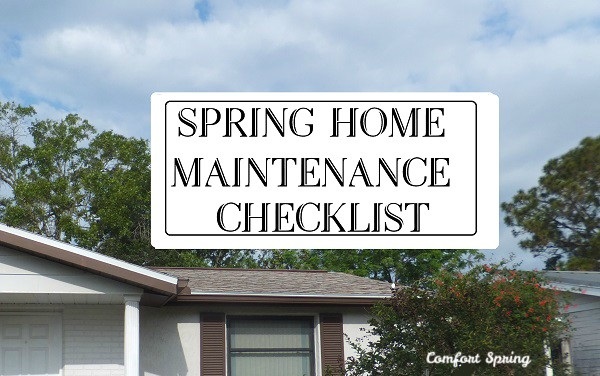
Latchel, which is a tech startup based in Tacoma Washington, helps property managers streamline their maintenance operations. Their service includes a number of features such as a proprietary emergency management technology that allows property managers to minimize damage from an emergency. This technology can reduce insurance expenses. They offer a user-friendly and innovative maintenance management system. Currently, they support 27,500 units across 50 cities in the United States.
In March of this year, the company launched their full-service solution, which includes an online portal and a mobile app, to help property managers handle all of their maintenance needs. It also provides a wide variety of benefits, such as emergency maintenance, concierge and insurance services, as well as contactless repairs and concierge services. Landlords can make their residents happier and improve their profitability by using their services. They recently integrated fintech into Vendor Pay, which allows them manage invoices for service providers.
Their proprietary emergency maintenance system is one of the most impressive achievements. Their ability to reduce the impact of an emergency is what makes them stand out from other property management systems. Their emergency phone number is a small, but critical part of their solution. It is available to tenants 24/7, seven days a week. The company will send a service professional if the problem is too complex to resolve over the phone.

Their video-based troubleshooting technology is another feature of the system. The system has the capability to save up to 30% of emergency maintenance requests from requiring an in-person visit from a technician. A typical landlord can save about $180 per unit every year with this technology
Latchel is another great example of a cloud service that allows property managers to provide better experiences for their residents. You can reach them by text and phone, for example, through their mobile app. A resident can request maintenance services and book them quickly. The app is a virtual concierge that can help with maintenance emergencies like evictions.
The product also features data-driven expert analyses from the CB Insights Intelligence Unit. As the name suggests they use algorithms to interpret data to aid property managers in finding the best solution to any maintenance problem. Latchel gathers resident feedback at the conclusion of every work order.
Overall, Latchel, an innovative and exciting company, has much to offer. They have an excellent platform and are poised to be a major provider of innovative property management services. From their proprietary technology, to their concierge services and emergency response, they are bringing a new era to the world of residential rental properties.

Property managers who want to make their customers happy and improve their bottom line will love Latchel. You will be able to make it easier for your tenants to feel happy and satisfied while also offering them a better living environment.
FAQ
What's the typical time taken to complete a DIY project like this?
An average DIY project takes between two and four hours. The complexity and difficulty of the project will determine how long it takes.
Are handymen insured?
Yes! Yes. Many insurance companies cover liability claims that exceed $1 million for bodily injuries and property damage. This means that your insurance company will compensate you for any damage caused by an accident during the project.
How often should I call a handyman?
It depends on the nature and scope of your project. If you are looking for a quick fix, like installing a lightbulb, you may only need one handyman per week. You might have to call several handymen if the job involves a lot more remodeling.
Which is easier, contracting or being handyman?
Because you only need tools and yourself, being a handyman is more time-consuming than contracting. You will need to be able manage your work and time, as contractors rely on subcontractors for most of their work.
Statistics
- A franchise was approximately $110,000 with a franchise fee of $14,900, according to a spokesperson for a national handyman franchise. (en.wikipedia.org)
- Another estimate was that the market in the United States was $126 billion and was increasing by about 4% annually. (en.wikipedia.org)
- An estimate was that in 2003, the market for home maintenance and repair spending was up 14% 2001 to 2003. (en.wikipedia.org)
- “Once the pandemic hit, that number fell to about 20%.” (inquirer.com)
- “Before the pandemic, 40% of people asked how we could estimate a job when we weren't there,” Rose recalled. (inquirer.com)
External Links
How To
How to replace a broken tile
Step 1 - Take out the old tiles.
You can remove the old tiles from your floor and save them. If you intend to use them, you will want to keep them intact. To avoid any problems with replacements, take note of the pieces that have been damaged or lost.
Step 2 - Select New Tiles
You can take a look at the different options for tile replacement.
-
You should find a similar tile to the one that you've just taken out.
-
Use the measurements you took when removing the tile to find a matching piece. This will make it much easier to find the right size without measuring again.
-
You should look for different colors, patterns and textures.
-
Consider what grout you prefer to use. Some people prefer a certain color, others like to mix it up.
-
Make sure the tile you select is resistant to moisture.
-
Make sure you consider where your tile will be placed. It can help you save money and time.
-
Once you've decided on your tile, you can order it online or by calling your local Lowe's to place your purchase.
Step 3 - Install the new tiles.
Use the same method as before to install your new tiles. It is important to align them correctly so they fit together properly.
Step 4 – Clean up
Before putting down the final layer of protective material, clean up all the debris from the floor.
This will prevent dust and dirt from building up between the tiles.
Step 5 – Sand down the floor
After cleaning, sand the floors to remove any particles.
Step 6 -- Finish Off
After the floor has been smoothed, you can apply protective coatings to the tiles. You should wait until this stage as wet paint can stain new tiles.
You can always use a "damp and dry" product on your floors to protect them from staining.
However, it will not cover all possible problems that may arise after you have installed your tiles. Consider adding an anti slip coating to your protective layer if you have kids.
Finally, don't forget to keep your protective sealer in place for several weeks before moving into your new home.